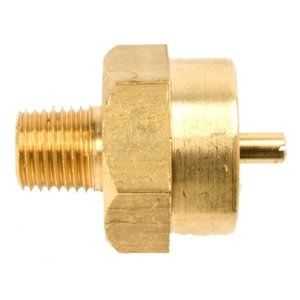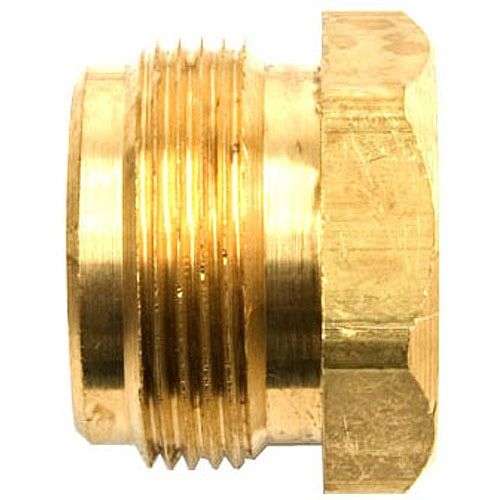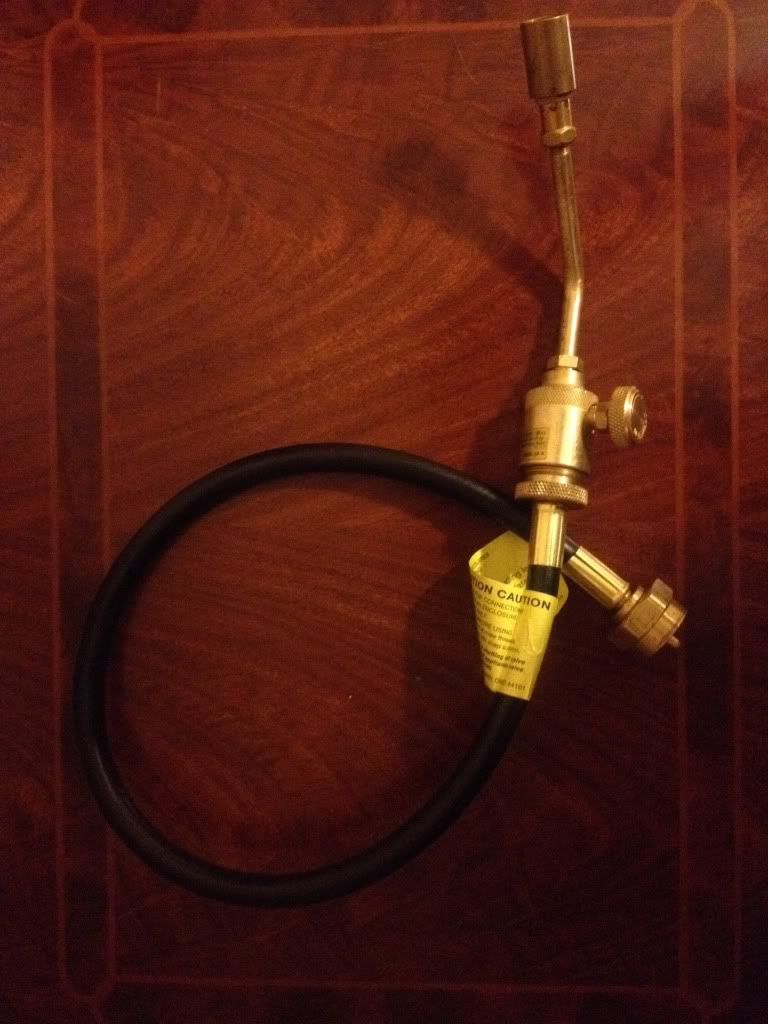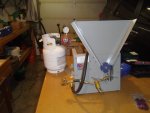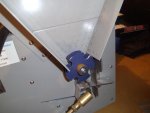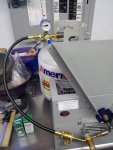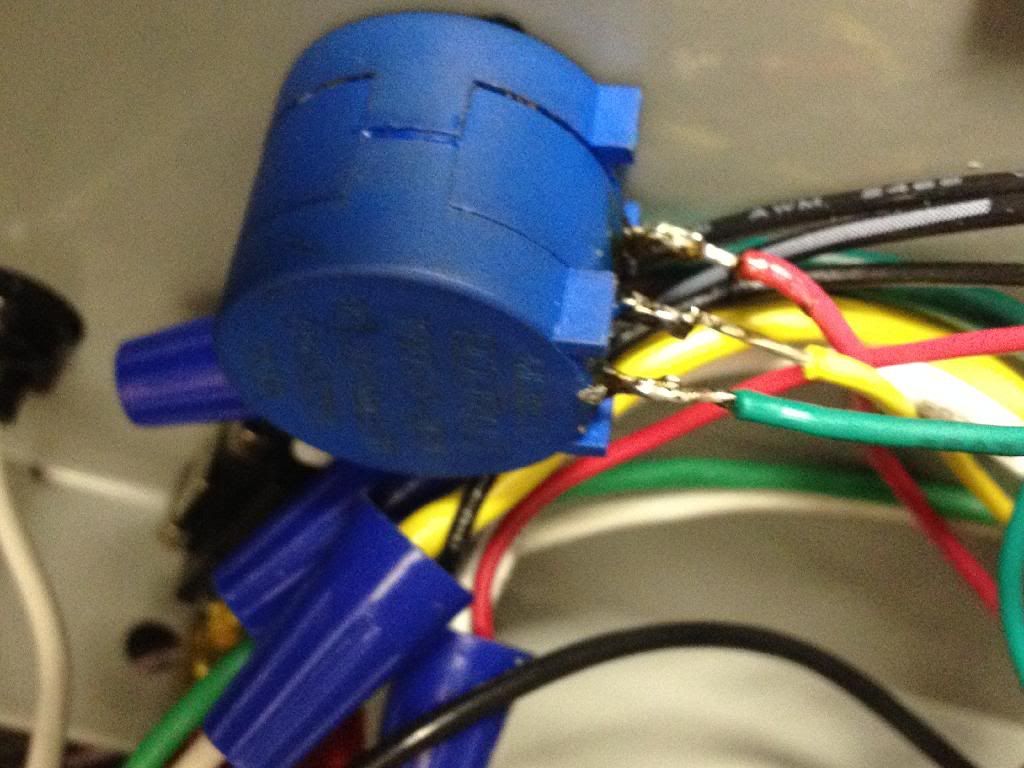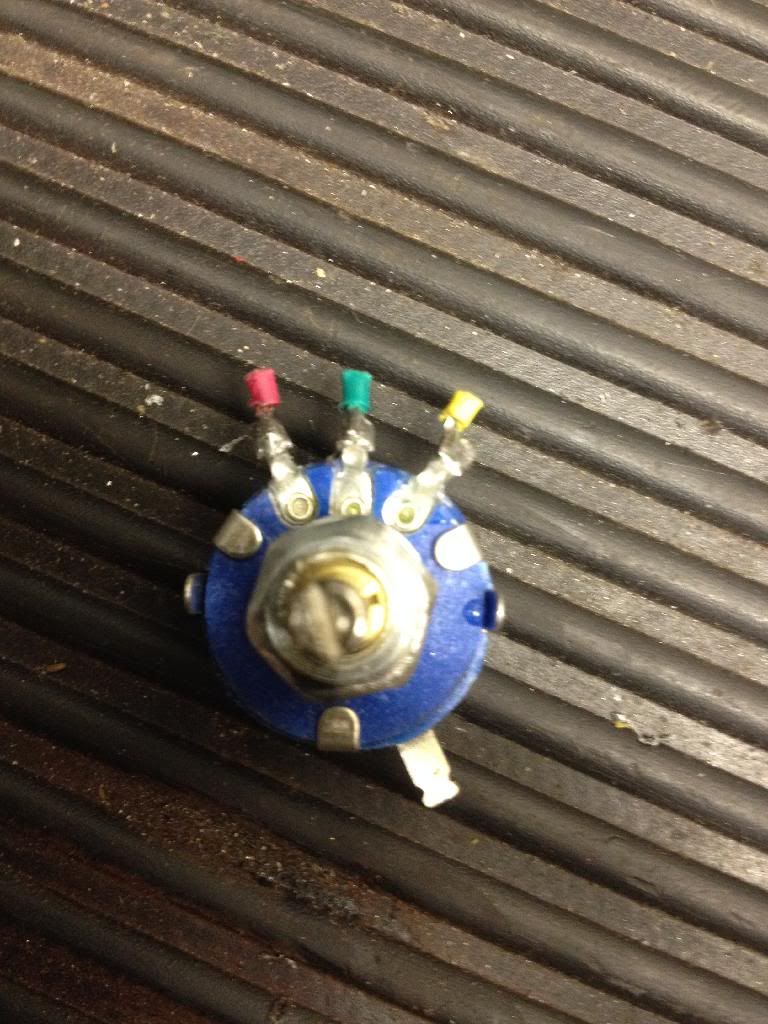I recently received my new annealer from Giraud.
http://www.giraudtool.com/annealer1.htm
I ordered it a few months back, and in the meantime I had looked up an old friend who coincidentally is now into shooting (BR) and has an annealer, once of the turntable style units.
I considered cancelling my order but I like to have my own equipment, so I let the order stand.
Before I ordered it, I did some (apparently flawed) research and came to the conclusion that the Giraud was the best deal out there on an automatic annealer.
After it arrived, I did some more reading and found turntable units for even less than the Giraud, so I tried to rationalize my choice (ever done this?). I didn't come up with anything, not uncommon
I set it up according to the Giraud's guidelines and immediately found a problem during the assembly.
Giraud suggests the tip of the torch be positioned 3/4" from the neck of .308 and .223 cases, which was impossible with the L bracket that holds the torch holder installed as pictured, so I installed it upside down, and was then able to get the torch within 3/4" of the case.
I then set the flame and the cycle time as directed and it seemed as though the necks on the .308 cases I was running were not getting hot enough.
Of course, without Tempilaq or an infrared thermometer with sufficient range, it is impossible to know for sure, so I packed it in for the night.
Giraud neither includes nor offers the 750 degree Tempilaq required to properly setup the machine, maybe for liability reasons, but it sure would have been handy right about then.
I ordered some 750 degree Tempilaq on Friday and it arrived last night.
After applying the heat sensing liquid to the inside of some case necks, I set the flame and cycle time as directed and ran a case.
As I suspected, the heat was too low or the cycle time too short to reach the required temperature.
I had talked to my friend with the turntable style machine with 2 torches and he reported his machine required 4 seconds per case, less than half the cycle time of a Giraud machine set to heat a case for 8 seconds: there is a few second delay between cases, increasing the processing time per case to over 10 seconds.
I increased the flame slightly, which is pretty difficult to do with the tiny opening required for such a small flame, and after a few tries I got the case necks to a temperature that changed the color of the Tempilaq right before dropping the case.
I then piled in 200 cases and realized the biggest benefit of the Giraud over the turntable machines. I sat next to the machine and reloaded while it ran automatically, so even though the cycle time is much longer than a dual burner turntable, I was free to do whatever I wanted (in the same room as the machine, never leaving it unattended) while it churned out the cases.
Halfway through the batch I prepped a case with Tempilaq and slipped it into the process, and it became apparent that something (the flame) had changed as the cases were getting at least a second more heat than they needed even though the speed had not changed. It's possible that the nozzle heating up adds to the heat conducted to the cases after running for a while. A slight decrease in flame (again, not easy to do) seemed to fix it for the rest of the batch.
While the batch ran I loaded up a few hundred rounds of .223 on a progressive, so it was fairly productive time. Again, I see this as a sizeable advantage the Giraud has over its competition. I'm pretty happy with the operation of the machine so far, and I hope to get many years (decades) of use out of it.
During my last bout of research I stumbled across this unit, which actually looks pretty decent for the price. I mention it in case anyone is interested in getting into low volume annealing on a budget. Hell, you could even make your own.
Home Page
Joe
http://www.giraudtool.com/annealer1.htm
I ordered it a few months back, and in the meantime I had looked up an old friend who coincidentally is now into shooting (BR) and has an annealer, once of the turntable style units.
I considered cancelling my order but I like to have my own equipment, so I let the order stand.
Before I ordered it, I did some (apparently flawed) research and came to the conclusion that the Giraud was the best deal out there on an automatic annealer.
After it arrived, I did some more reading and found turntable units for even less than the Giraud, so I tried to rationalize my choice (ever done this?). I didn't come up with anything, not uncommon
I set it up according to the Giraud's guidelines and immediately found a problem during the assembly.
Giraud suggests the tip of the torch be positioned 3/4" from the neck of .308 and .223 cases, which was impossible with the L bracket that holds the torch holder installed as pictured, so I installed it upside down, and was then able to get the torch within 3/4" of the case.
I then set the flame and the cycle time as directed and it seemed as though the necks on the .308 cases I was running were not getting hot enough.
Of course, without Tempilaq or an infrared thermometer with sufficient range, it is impossible to know for sure, so I packed it in for the night.
Giraud neither includes nor offers the 750 degree Tempilaq required to properly setup the machine, maybe for liability reasons, but it sure would have been handy right about then.
I ordered some 750 degree Tempilaq on Friday and it arrived last night.
After applying the heat sensing liquid to the inside of some case necks, I set the flame and cycle time as directed and ran a case.
As I suspected, the heat was too low or the cycle time too short to reach the required temperature.
I had talked to my friend with the turntable style machine with 2 torches and he reported his machine required 4 seconds per case, less than half the cycle time of a Giraud machine set to heat a case for 8 seconds: there is a few second delay between cases, increasing the processing time per case to over 10 seconds.
I increased the flame slightly, which is pretty difficult to do with the tiny opening required for such a small flame, and after a few tries I got the case necks to a temperature that changed the color of the Tempilaq right before dropping the case.
I then piled in 200 cases and realized the biggest benefit of the Giraud over the turntable machines. I sat next to the machine and reloaded while it ran automatically, so even though the cycle time is much longer than a dual burner turntable, I was free to do whatever I wanted (in the same room as the machine, never leaving it unattended) while it churned out the cases.
Halfway through the batch I prepped a case with Tempilaq and slipped it into the process, and it became apparent that something (the flame) had changed as the cases were getting at least a second more heat than they needed even though the speed had not changed. It's possible that the nozzle heating up adds to the heat conducted to the cases after running for a while. A slight decrease in flame (again, not easy to do) seemed to fix it for the rest of the batch.
While the batch ran I loaded up a few hundred rounds of .223 on a progressive, so it was fairly productive time. Again, I see this as a sizeable advantage the Giraud has over its competition. I'm pretty happy with the operation of the machine so far, and I hope to get many years (decades) of use out of it.
During my last bout of research I stumbled across this unit, which actually looks pretty decent for the price. I mention it in case anyone is interested in getting into low volume annealing on a budget. Hell, you could even make your own.
Home Page
Joe
Last edited:

